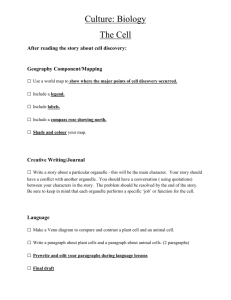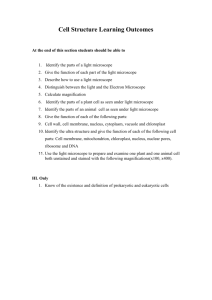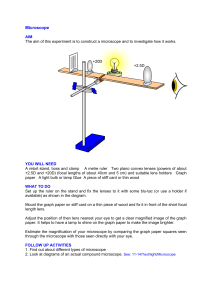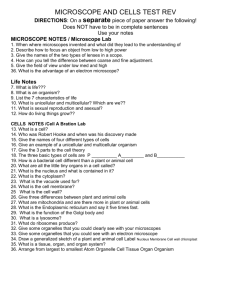Microscope worksheet
advertisement
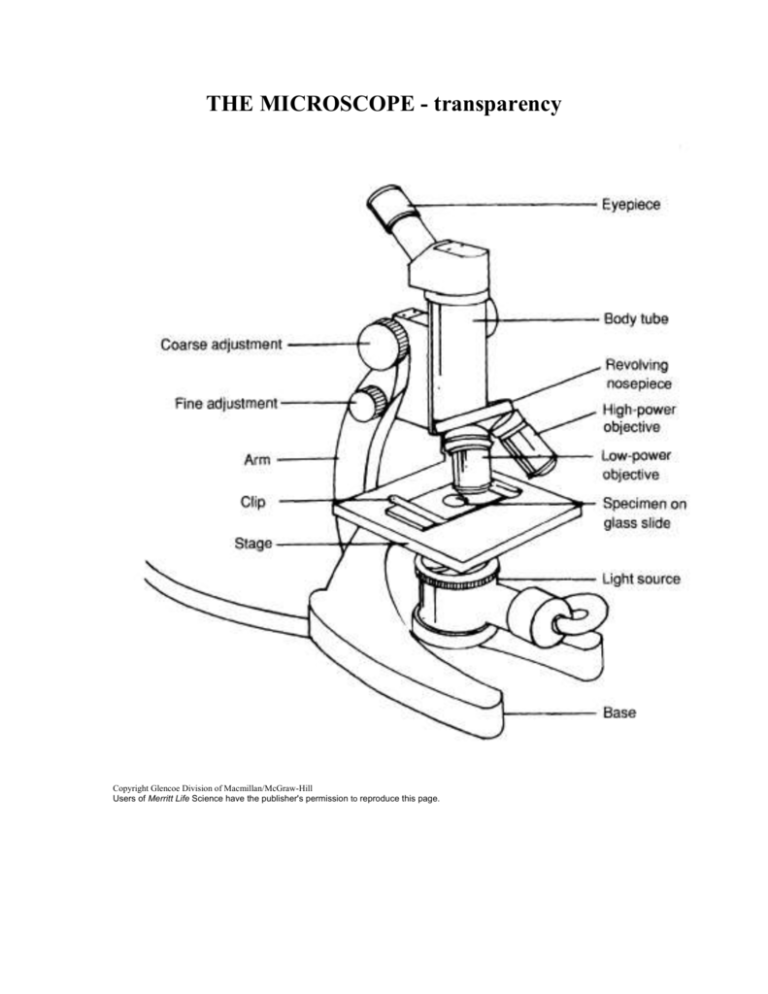
THE MICROSCOPE - transparency Copyright Glencoe Division of Macmillan/McGraw-Hill Users of Merritt Life Science have the publisher's permission to reproduce this page. THE MICROSCOPE 1. Microscopes are classified as simple or compound depending upon what? 2. If you carry a microscope from one part of the room to another, by what two parts should it be carried? 3. On what part of the microscope is the specimen placed? 4. How many lenses are in a compound light microscope? What is the function of the lenses? 5. If the eyepiece has a 15x lens and the high power lens has 100x magnification, what is the total magnification? 6. Which parts shown enable you to adjust the focus of the microscope? Which part should you focus with first? 7. Compare Van Leeuwenhoek's microscope with the modern compound microscope. Copyright Glencoe Division of Macmillan/McGraw-Hill Users of Merritt Life Science have the publisher's permission to reproduce this page. The Microscope USING A MICROSCOPE Microscopes are optical instruments, much like a pair of glasses. The purpose of the microscope is to help you see things that are very small. In life science, the microscope can introduce you to organisms that you would otherwise not see. Because it is a delicate instrument, a microscope requires careful handling. Show that you are aware of how to handle a microscope correctly by completing the following statements. 1. Always carry a microscope with one hand on the _________________ and the other hand on the _________________. 2. A microscope should be stored with the _________________ objective in place. 3. Always bring a specimen into focus using the _________________ objective. 4. Never use the _________________ adjustment to focus the high-power objective. 5. Do not allow direct sunlight to fall on the _________________. 6. Use only the _________________ adjustment when focusing with the high-power objective. 7. Lenses should be cleaned with _________________. Identify the parts of the microscope on the lines to the left. A. __________________________________ B. __________________________________ c. __________________________________ D. __________________________________ E. __________________________________ F. __________________________________ G. __________________________________ H. __________________________________ I. __________________________________ J. __________________________________ K. __________________________________ L. __________________________________ M. __________________________________ Copyright Glencoe Division of Macmillan/McGraw-Hill Users of Merritt Life Science have the publisher's permission to reproduce this page.




